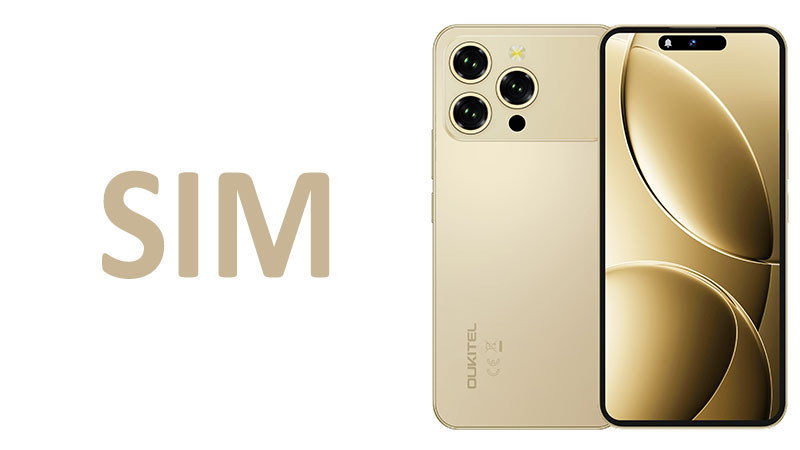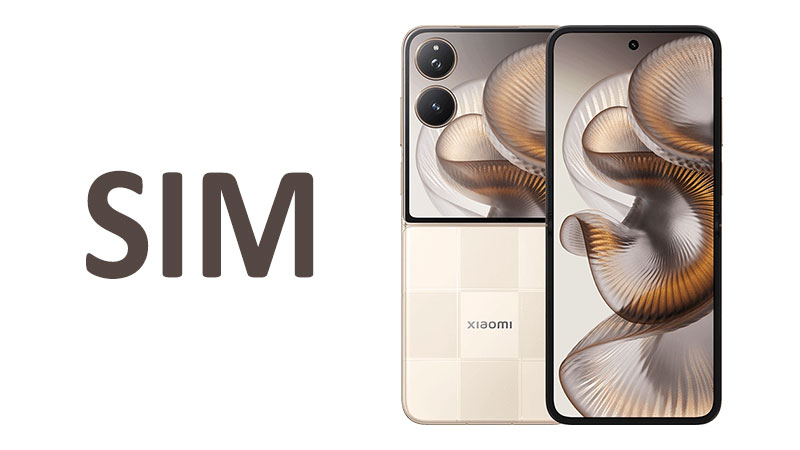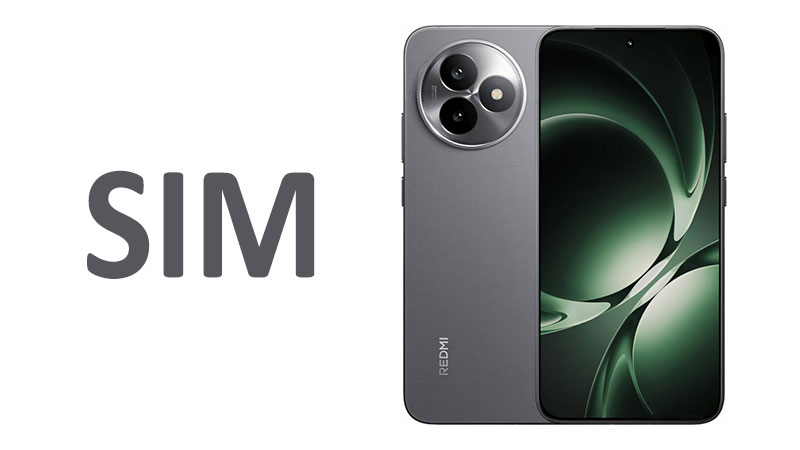The Oukitel P1 Pro SIM setup is a crucial feature for global users and multitaskers. This comprehensive article dives deep into the phone’s dual-SIM architecture. We will also explore its robust suite of connectivity options. Understanding these features helps buyers evaluate its performance and versatility. The Oukitel P1 Pro aims to provide seamless communication and data access worldwide. We will cover the hardware, network technology, and local wireless capabilities. This review will guide you through every critical detail.
A Deep Dive into Oukitel P1 Pro Dual-SIM Architecture
The Oukitel P1 Pro offers a purely dedicated dual-SIM solution. This design choice is a major selling point for many consumers. It directly addresses the needs of modern, connected users. This section explores the specific SIM configuration and its operational benefits.
Dual Nano-SIM Configuration Explained
The Oukitel P1 Pro SIM tray accommodates two Nano-SIM cards. It supports a configuration of Nano-SIM plus Nano-SIM. This is the standard for modern, compact smartphones. Both SIM slots are fully active and support 4G LTE technology. This specific arrangement provides significant user flexibility. Users can manage two separate mobile lines simultaneously.
This setup is crucial for several types of users. Business professionals can keep work and personal numbers separated. Frequent travelers can use one local SIM and one international travel SIM. This helps them optimize calling and data costs. The dedicated dual Nano-SIM means no compromises are necessary. It is a straightforward, functional solution.
Dual SIM, Dual Standby (DSDS) Functionality
The Oukitel P1 Pro utilizes Dual SIM, Dual Standby technology. DSDS means both SIM cards remain active and ready to receive calls or texts. They wait in a standby state. This functionality operates with a single set of radio hardware. When one SIM card is actively engaged in a call or data transfer, the other line temporarily becomes inactive.
However, the transition is usually quick and seamless. You can switch data access between the two SIMs in the settings menu. This allows users to leverage the best data plan available at any time. DSDS offers excellent balance between functionality and battery life. It is the most common and efficient form of dual-SIM operation. Understanding DSDS is key to maximizing the dual-SIM benefit.
Specialized Comparison: Dual Nano vs. Hybrid Slot
The dedicated dual Nano-SIM configuration is a major advantage. Many competing budget and mid-range phones use a hybrid SIM slot. A hybrid slot forces the user to choose between two options. They must select either dual SIMs or one SIM and a microSD card for expanded storage. This choice can be frustrating for power users.
The Oukitel P1 Pro avoids this limitation entirely. It offers two dedicated Nano-SIM slots. It also features a separate, dedicated slot for microSD storage expansion. This is a superior design for users needing both dual-SIM and maximum storage. It eliminates the need to compromise on utility. This focus on maximum concurrent utility is a key selling point.
Pros and Cons of the Oukitel P1 Pro SIM Setup
The Oukitel P1 Pro SIM arrangement offers many benefits, but a few drawbacks exist.
Pros:
- Dedicated Flexibility: Users can utilize two lines and expandable storage simultaneously.
- Carrier Freedom: You can mix and match different carriers for optimal coverage and pricing.
- Travel Convenience: It is easy to switch to a local SIM card while traveling internationally.
- Clear Separation: It is simple to maintain separate numbers for work and personal life.
Cons:
- Size Standard: Nano-SIMs are the smallest standard, which may require an adapter for older SIM cards.
- Single Active Call: Only one SIM can be actively in use for a call at any time due to DSDS.
Important Points for Buyers
Buyers prioritizing connectivity should note the dedicated slots. This feature adds long-term value to the device. The ability to use two SIMs and a memory card is rare in this price segment. This provides a tangible competitive advantage. This design supports versatile user scenarios immediately upon purchase.
Furthermore, ensure your carriers support the 4G LTE bands used by the Oukitel P1 Pro. While the technology is robust, regional band compatibility is always important. Confirming band support guarantees seamless service. This proactive check ensures maximum satisfaction with the phone.
Comprehensive Review of Oukitel P1 Pro Cellular Network Mastery
The Oukitel P1 Pro boasts comprehensive network technology support. This support extends across various global standards. It ensures the phone is functional in a wide range of regions and networks. This section details the phone’s cellular capabilities from 2G to 4G LTE.
Full Technology Support: From GSM to LTE
The phone supports all major cellular technologies. The technology suite includes GSM, CDMA, HSPA, CDMA2000, and LTE. This breadth of support is essential for universal compatibility. GSM (2G) and HSPA (3G) handle basic voice and older data services. This is important for areas with limited infrastructure.
The inclusion of CDMA and CDMA2000 ensures compatibility with specific networks globally. CDMA is particularly relevant in certain markets. Its inclusion broadens the phone’s appeal considerably. This comprehensive coverage minimizes the risk of network incompatibility. It provides reliable connectivity wherever you travel.
High-Speed 4G LTE Performance
LTE is the primary driver for modern mobile data speeds. The Oukitel P1 Pro supports 4G LTE, offering fast internet access. This capability ensures smooth streaming, quick downloads, and responsive browsing. Reliable LTE is necessary for high-quality video calls and online gaming. The phone’s implementation focuses on stability and speed.
LTE offers a massive improvement over older 3G speeds. This jump in performance is critical for the modern mobile experience. Users can confidently rely on the phone for bandwidth-intensive tasks. The quality of the LTE antenna design influences real-world performance. The P1 Pro is engineered for solid, consistent 4G signal reception.
Specialized Comparison: LTE Capability
Compared to older budget models, the P1 Pro’s LTE is superior. Many older, lower-cost dual-SIM phones only offered 4G on the primary slot. The second slot might have been limited to 3G or 2G speeds. The Oukitel P1 Pro, however, provides full 4G support on both Nano-SIM slots.
This means you get high-speed data access regardless of which SIM you designate for data. This uniform speed capability is a massive functional upgrade. It removes the speed limitation from the second line. This full dual 4G feature sets it apart from many competitors in the budget segment. It is a genuine commitment to premium functionality.
Pros and Cons of the Cellular Technology Suite
The broad cellular technology support provides undeniable advantages.
Pros:
- Global Compatibility: Support for all standards (GSM/CDMA/HSPA/CDMA2000/LTE) ensures worldwide use.
- Dual 4G Capability: Both SIM slots support fast LTE data speeds.
- Future-Proofing (Mid-Term): The robust 4G implementation ensures relevance for years to come.
- Reliable Voice: Strong support for older networks (2G/3G) guarantees voice calls even in remote areas.
Cons:
- No 5G: The phone lacks next-generation 5G technology. Users seeking the absolute fastest speeds may find this a drawback.
- Band Limitations: While general support is broad, specific regional LTE band coverage must be verified for extreme compatibility.
Buyer Points on Network Band Coverage
A buyer must research the supported LTE frequency bands. This information is vital for international use. Different countries and carriers use different bands for 4G service. The Oukitel P1 Pro generally covers the major international bands. However, niche carriers or specific remote regions might use less common bands.
Verifying compatibility ensures you get the promised 4G speeds. If a band is unsupported, the phone will fall back to 3G or 2G. This significantly degrades the data experience. Always check the official band specifications against your target network. This simple step guarantees optimal network performance from your device.
Wireless and Local Connectivity: Wi-Fi, Bluetooth, and NFC
Beyond cellular networks, a smartphone’s local wireless connectivity is crucial. The Oukitel P1 Pro packs a comprehensive suite of modern standards. This suite includes advanced Wi-Fi, the latest Bluetooth, and Near Field Communication (NFC). These features enhance daily interactions and data transfer efficiency.
High-Speed Wi-Fi 802.11 a/b/g/n/ac
The phone features Wi-Fi 802.11 a/b/g/n/ac support. This designation means it supports the fastest widely adopted Wi-Fi standard, 802.11ac. This standard provides significantly faster data throughput than previous generations. It is essential for streaming high-resolution video and quickly downloading large files at home or work.
The inclusion of dual-band support is equally important. Dual-band means the phone can connect to both the 2.4 GHz and 5 GHz frequencies. The 2.4 GHz band offers wider coverage and better wall penetration. The 5 GHz band provides much faster speeds and less interference. This flexibility ensures optimal Wi-Fi performance in any environment.
Specialized Comparison: Dual-Band Wi-Fi Advantage
Many budget phones limit their Wi-Fi to 802.11n and the 2.4 GHz band. This single-band restriction often leads to slow speeds in crowded areas. Shared 2.4 GHz networks suffer heavily from interference. The Oukitel P1 Pro’s dual-band 5 GHz capability avoids this congestion.
This means the phone can maintain a fast, stable connection even in busy cafes or apartment buildings. The 5 GHz connection delivers a notably better user experience. It ensures quick and reliable home network access. This dual-band support is a major quality-of-life feature.
Bluetooth 5.0 for Advanced Wireless Accessories
The Oukitel P1 Pro includes the modern Bluetooth 5.0 standard. Bluetooth 5.0 is a significant upgrade from the older 4.2 standard. It offers several key improvements for wireless accessory users. These improvements include a doubled data transfer speed and four times the range.
The “LE” (Low Energy) designation ensures minimal power consumption. This is vital for fitness trackers and smartwatches. Bluetooth 5.0 also supports A2DP (Advanced Audio Distribution Profile). This ensures high-quality wireless audio streaming to headphones and speakers. The stable connection and high audio fidelity enhance the listening experience.
NFC: Contactless Payments and Pairing
NFC, or Near Field Communication, is included on the Oukitel P1 Pro. This feature enables several convenient, short-range wireless functions. The most popular use case is contactless mobile payments. You can use services like Google Pay with a simple tap of your phone. This eliminates the need for physical credit cards.
NFC also simplifies the pairing of Bluetooth devices. A quick tap can instantly connect your phone to compatible accessories. This feature adds a layer of modern convenience to the device. Its presence is no longer a premium feature, but a necessity. The P1 Pro delivers this essential modern capability.
Pros and Cons of the Wireless Suite
The combination of advanced wireless technologies is a major benefit.
Pros:
- Speed and Stability: Dual-band 802.11ac Wi-Fi offers fast, stable internet access.
- Efficient Accessories: Bluetooth 5.0 provides long range, fast speed, and low power usage.
- Modern Convenience: NFC enables seamless contactless payments and quick device pairing.
Cons:
- Wi-Fi 6 Omission: The phone does not include the latest Wi-Fi 6 (802.11ax) standard. This is a minor drawback for future-proofing.
- User Setup: Users must manually select the 5 GHz band for faster speeds if the router uses the same name for both bands.
Important Points for Wireless Users
For users heavily relying on wireless tech, these features are essential. The Bluetooth 5.0 and dual-band Wi-Fi significantly improve usability. They ensure stable connections for everything from video conferencing to music listening. The inclusion of NFC makes daily transactions much faster and more secure. Buyers should appreciate the inclusion of these modern standards. They contribute directly to a smooth user experience.
Positioning, Utility, and Physical Connectivity
The final layer of the Oukitel P1 Pro connectivity package covers navigation and physical ports. These features dictate the phone’s utility for travel, charging, and data transfer. The P1 Pro is well-equipped with modern, versatile components.
Multi-Constellation Global Positioning
Accurate location services are critical for modern navigation and mapping apps. The Oukitel P1 Pro supports multi-constellation positioning. This includes GPS, GALILEO, GLONASS, and BDS (BeiDou Navigation Satellite System). Relying on multiple satellite systems improves accuracy significantly.
It also increases the reliability of location tracking in challenging environments. Buildings and dense trees can obstruct satellite signals. Accessing four different systems ensures a strong and quick position lock. This multi-system support makes the phone an excellent navigator for driving, hiking, and daily commuting. Precision and speed are hallmarks of this system.
USB Type-C and On-The-Go (OTG) Functionality
The phone uses the modern USB Type-C port for charging and data transfer. The USB Type-C standard is reversible, which makes connecting cables much easier. It also supports faster charging and data speeds than the older Micro-USB standard. This port design is expected on all contemporary devices.
Crucially, the P1 Pro supports OTG (On-The-Go) functionality. OTG allows the phone to act as a host device. You can connect and power external peripherals. These peripherals include flash drives, keyboards, and mice. This capability transforms the phone into a versatile mini-computer. It is a powerful tool for transferring files without a PC.
The Inclusion of FM Radio
In an age dominated by streaming, the Oukitel P1 Pro retains an FM radio. This is a simple but valuable utility feature. It allows users to listen to local radio stations without using mobile data. The FM radio can be a lifesaver during power outages or emergencies. It only requires a pair of wired headphones to act as an antenna.
This feature adds value for users who prefer traditional broadcast media. It is also great for cutting down on data consumption while commuting. The inclusion of the FM radio is a thoughtful addition. It caters to a practical, non-data-reliant need.
Specialized Comparison: Multi-GNSS vs. Single GPS
Compared to phones that only use GPS, the P1 Pro is far superior. A single GPS connection can be slow and less precise. Utilizing GALILEO, GLONASS, and BDS alongside GPS provides redundancy. It also offers enhanced geometric positioning accuracy. This is especially noticeable in city centers where tall buildings block satellite views. The P1 Pro locks your position faster and keeps it locked more reliably. This provides a tangible advantage in real-world navigation.
Pros and Cons of Utility Features
The utility features are generally strong and well-rounded.
Pros:
- Superior Accuracy: Multi-GNSS (GPS, GALILEO, GLONASS, BDS) ensures fast and reliable location tracking.
- Modern Port: USB Type-C is convenient, fast, and reversible.
- Versatile Host: OTG functionality expands the phone’s utility with external devices.
- Data-Free Media: FM Radio offers free, non-streaming entertainment and emergency access.
Cons:
- No High-Speed USB: While Type-C, the phone may not support the absolute fastest USB data standards (e.g., USB 3.0 speeds).
- Limited Headphone Use: The FM radio requires wired headphones, which may conflict with the preference for wireless audio.
Important Points for Travelers and Power Users
The travel community will appreciate the comprehensive positioning system. Reliable navigation is non-negotiable when exploring new places. Power users will value the OTG capability. It allows for quick data backups and easy file access on the go. The modern USB-C port simplifies the charging ecosystem. The connectivity features collectively enhance the device’s practical usefulness. They make it a reliable partner for many diverse activities.
Overall Key Takeaways and Buyer’s Guide
The Oukitel P1 Pro SIM and connectivity suite stands out. It successfully combines flexibility with modern technology. The dedicated dual Nano-SIM slots are a strong feature. They eliminate the frustrating storage compromise found elsewhere. Full 4G LTE support on both lines ensures consistent high-speed data.
The wireless features are equally robust. Dual-band Wi-Fi and Bluetooth 5.0 provide efficient local connectivity. The multi-GNSS system offers excellent navigational accuracy. NFC support provides the necessary modern payment convenience. While it lacks 5G, the phone offers a complete 4G experience. It is a highly competitive package for the mid-range user.
Buyers should select this device if they need multiple carriers and external storage. They should also choose it for reliable global navigation. The P1 Pro is an excellent choice for budget-conscious travelers and business users. It delivers on its promise of comprehensive and stable connectivity.
Conclusion
The Oukitel P1 Pro SIM and connectivity features define its value proposition. The architecture centers around a dedicated dual Nano-SIM setup. This crucial design choice maximizes user flexibility. It allows simultaneous use of two carriers and a microSD card. This removes the common hybrid slot compromise.
The cellular suite offers broad global compatibility. It supports everything from 2G GSM to fast 4G LTE on both SIM cards. Local connectivity is modern and efficient. The phone features dual-band 802.11ac Wi-Fi and Bluetooth 5.0. Furthermore, multi-constellation positioning and USB Type-C with OTG enhance utility. The inclusion of NFC makes contactless transactions seamless.
The P1 Pro delivers a highly versatile and robust connectivity experience. Its features are well-suited for international travelers and professionals. It provides reliable speed and convenience across all platforms. The Oukitel P1 Pro represents a smart investment in dependable mobile communication.
Frequently Asked Questions (FAQ)
Does the Oukitel P1 Pro support 5G networks?
No, the Oukitel P1 Pro does not support 5G networks. It uses the robust 4G LTE technology for mobile data.
Can I use two different mobile carriers simultaneously?
Yes, you can use two separate mobile carriers at the same time. The phone features dedicated dual Nano-SIM slots for this purpose.
What is the advantage of dual-band Wi-Fi on this phone?
Dual-band Wi-Fi allows connection to both 2.4 GHz and 5 GHz networks. The 5 GHz connection offers faster speeds and less interference.
Does the Oukitel P1 Pro have NFC for mobile payments?
Yes, the Oukitel P1 Pro includes NFC functionality. You can use it for contactless payments and easy device pairing.
Can I use a flash drive directly with the phone?
Yes, you can connect a flash drive. The USB Type-C port supports OTG (On-The-Go). This allows it to act as a host for external devices.



